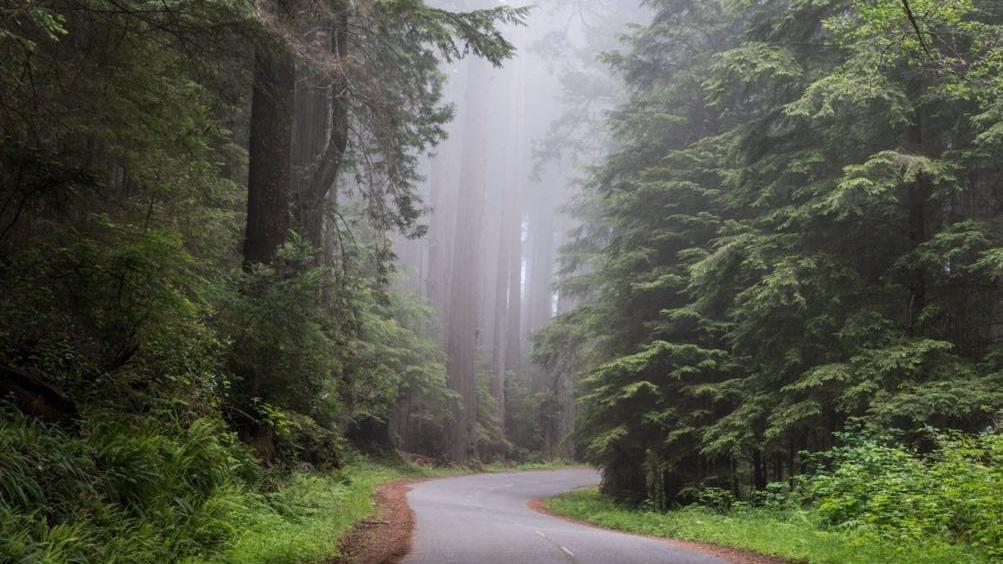Gardening Under Redwood Trees

Coast redwood trees (Sequoia sempervirens) only grow on the Pacific coast from Big Sur to southern Oregon, where their need for mass quantities of water is met from winter rain and summer fog. Ancient giants, they are among the tallest living things on Earth. Their relatives grew during the Dinosaur Age. They live 500 to 1,000 years – sometimes more than 2,000 years. They don't produce seed till age 20 and the most fertile trees are 60 to 100 years old. Some do not generate cones, putting their energy into growing tall instead. Redwood bark is up to a foot thick. They withstand disease, floods, and fire, yet only 4% of original redwood forests remain.
Despite these remarkable attributes, gardening near redwoods presents unique challenges.
Use our list of > PLANTS THAT GROW UNDER REDWOODS
These plants grow naturally under redwoods. They prefer water, acid soil, and part to full shade – all necessary requirements when living in the shadow of one of these giants.
Challenges when gardening near redwoods
It pays to gain a clear understanding of what gardening near redwoods entails:
• Anything planted under a redwood faces tough competition for water, light, and root space.
• Acidic soil and constant leaf litter creates an inhospitable environment for many plants.
• Needles constantly drop on rooftops, patios, neighbors' houses, sidewalks, and streets.
• Needles clog gutters and increase fire risk.
• Neighbors may complain when your redwood tree blocks their view.
• Redwoods planted too closely to houses and other structures may affect foundations.
Strategies for planting under redwoods
• Do not plant close to the trunk.
• Provide ample water.
• Leave the duff (dropped redwood needles). It's a natural mulch and soil amendment. Do not rake.
• Do not feed. If you leave the duff, your redwoods will get all the nutrients they need.
• Grow the plants that coexist with redwoods in nature. These plants appreciate the shady, cool, damp, acidic, dense redwood understory environment.
• Be realistic about their ultimate size and growth rate. In their native range, redwoods can grow 70 to 90 feet tall and 15 to 30 feet wide in 25 years. (Tough to accommodate in the average backyard.)
• Appreciate what you're up against. Considering their mammoth size, redwoods have shallow roots only 6 to 12 feet deep, yet those roots extend 100+ feet from the trunk and intertwine with the roots of other redwoods. This allows them to withstand powerful winds and floods.
Benefits of redwood trees
Help mitigate climate change: Capture more carbon dioxide than any other tree on Earth.
Quality lumber: Make excellent decks and fences because the lumber is high in tannin, which provides resistance to fungi, disease, rot, and insects.
Support endangered wildlife like mountain lions and Coho salmon, which depend on redwood forests. Redwoods support some species that are found nowhere else on Earth.
Filter and shade rivers and streams.
